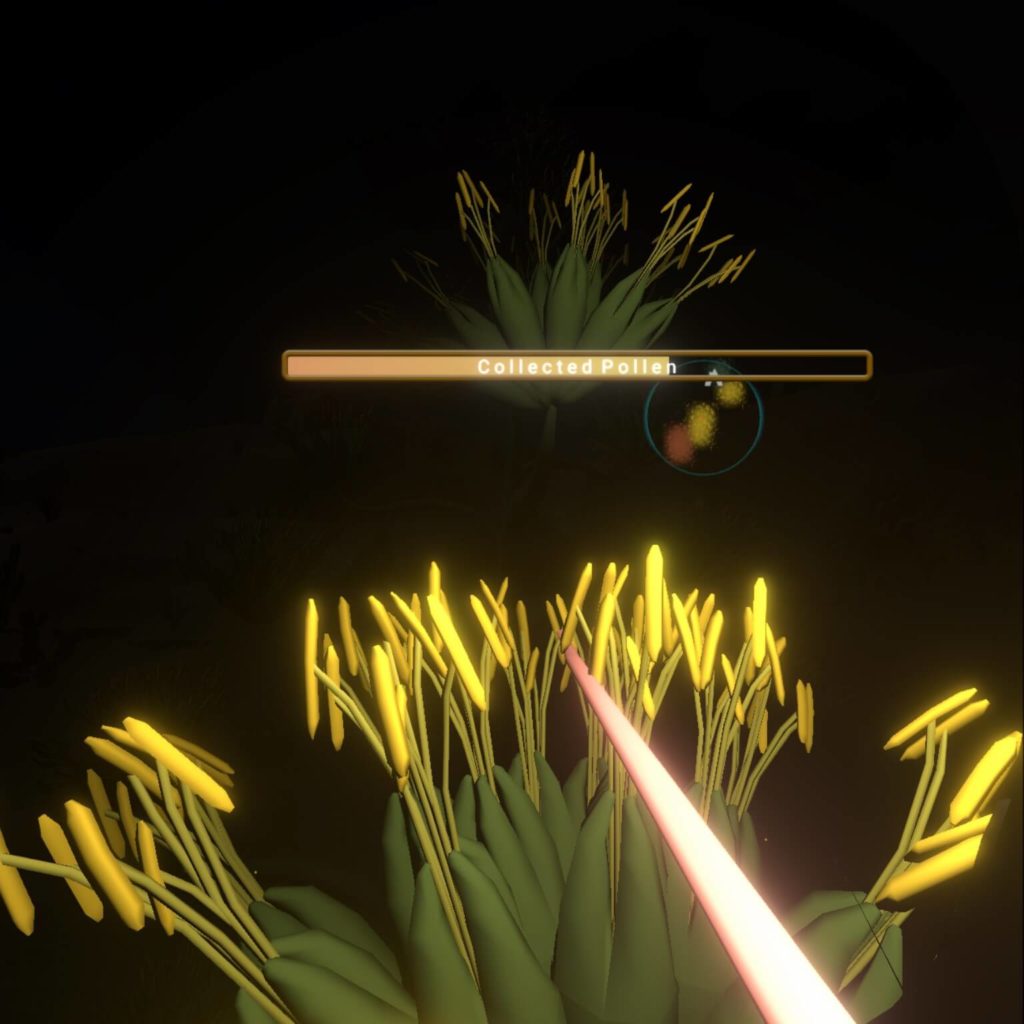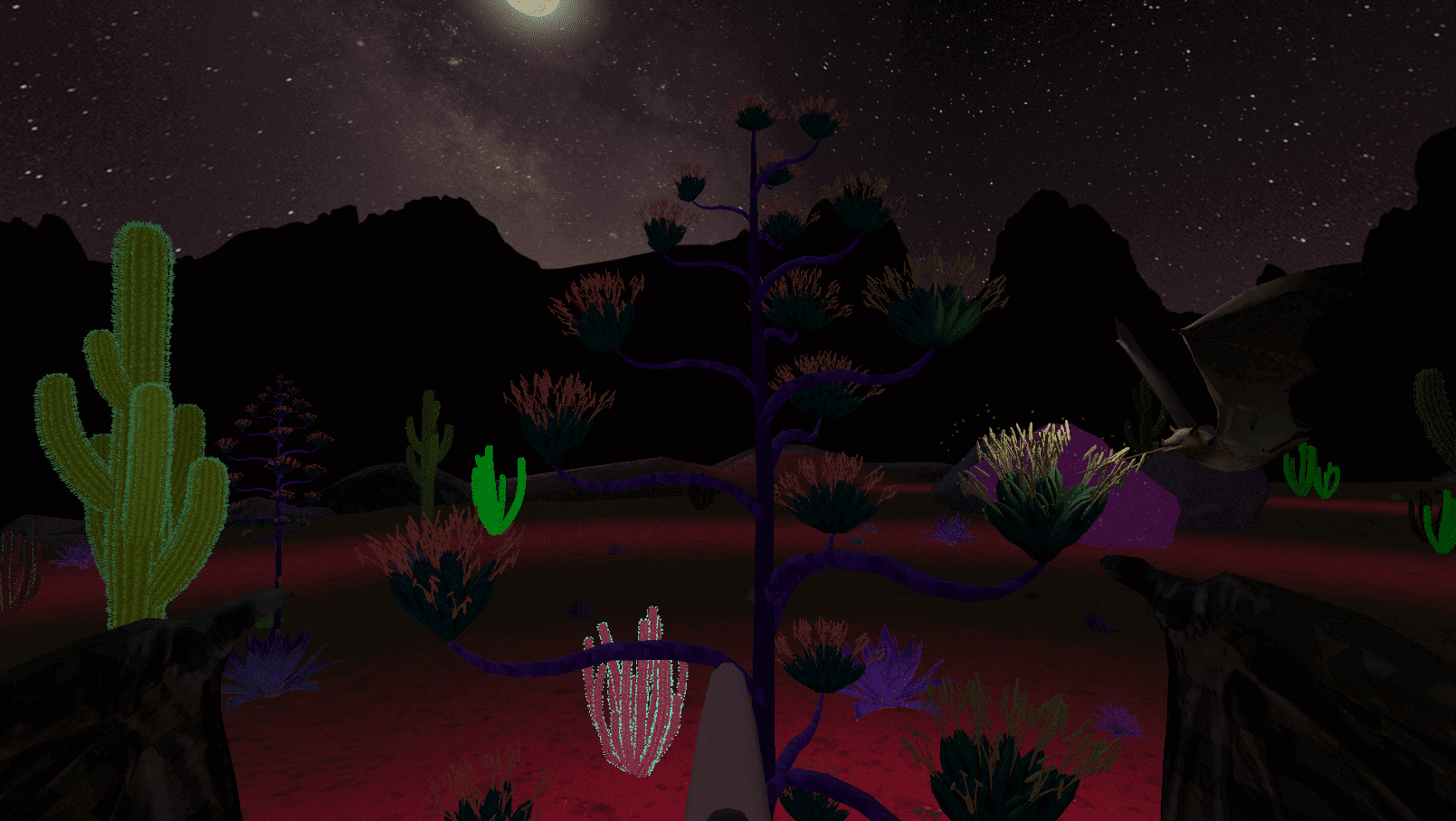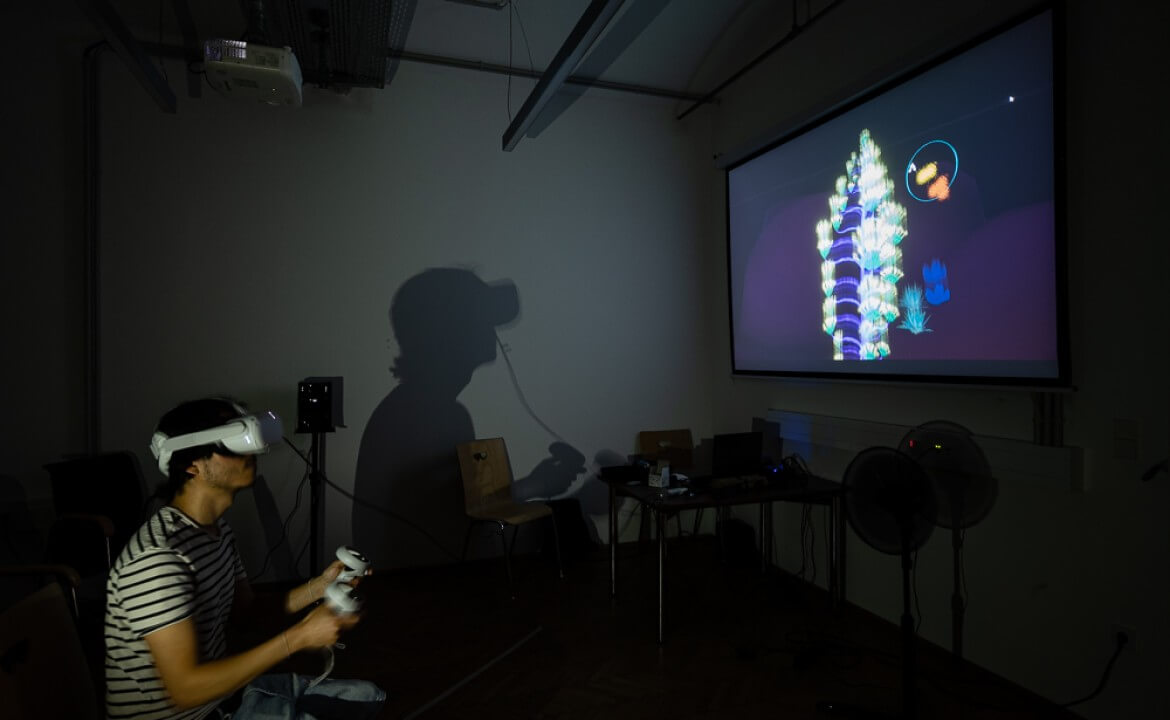BAT EXPERIENCE
Pollination through Sound
2021
VR-Installation
Master thesis in Art and Science at the University of Applied Arts Vienna in collaboration with the Biologist Juan Felipe Sehuanes, Candidate to the Ph.D. in Bioacoustic of bats at the University of Tübingen.
With the support of the ministry of arts and culture from Austria.
In BAT EXPERIENCE you have the opportunity to embody the Lesser Long-Nosed bat, a resident of the deserts of Central and North America and perceive this arid landscape through active echolocation. Your goal is to use your new senses to find the plants you like to feed on! With the help of virtual reality, we visualize the ‘acoustic image’ bats create when using echolocation and offer a glimpse to their amazing world from a non-human perspective. This immersive experience seeks to generate awareness and fascination for these winged inhabitants of this ecosystem and thereby promote conservation.
Bats use active echolocation to perceive the world around them, which, different to all of our senses, is an active way of sensing. This is especially difficult to understand from a human perspective since all our senses work passively. We do not need to send anything to the environment to see or hear. On the other hand, bats are in constant communication with their environment by sending calls and waiting for the returning echoes. From this acoustic way of perception, some plants have exploited different strategies to reflect the ultrasound more clearly and thereby attract these winged mammals. Hundreds of years of coexistence were needed to achieve a sophisticated form of communication, between the vocal-auditory organs of the bat and the sexual organs of the plant. Living together and shaping each other.
This collaboration in art and biology aims to make both visible and interactive, the acoustic communication between pollinating bats and the plants they feed on.

Winged messengers plunge their snouts into the sexual organs of another being, sinking their long tongues to feed on the sweet nectar. Meanwhile, the cunning flower smears the fertile lunar yellow pollen on their coats, and innocently, they fertilize by satiating their appetite. From stamen to stigma.



